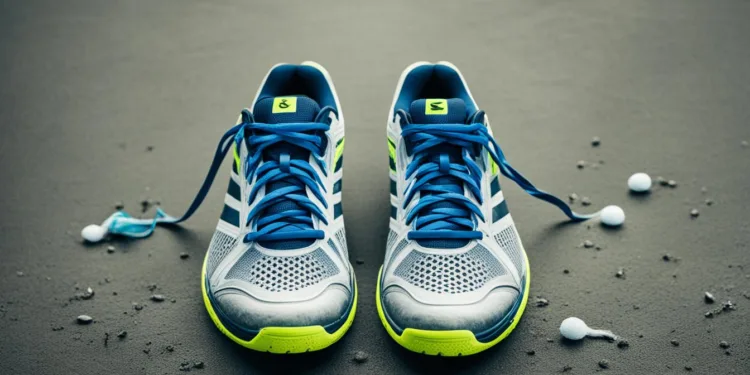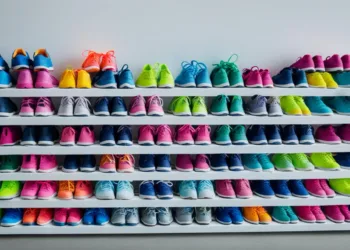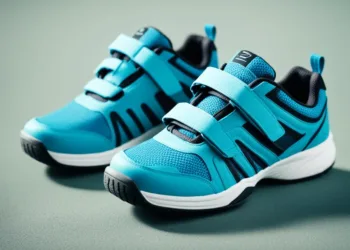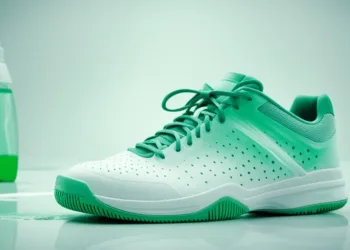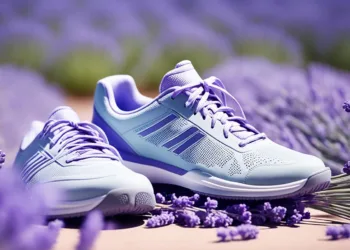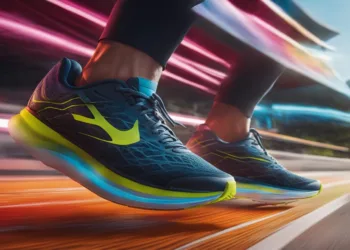Table of Contents
- 1 Make Your Shoes Last Longer Running Shoe
- 2 Understanding Tennis Shoes Lifespan and Factors Affecting Wear
- 3 Tennis Shoes Lifespan: Determining When to Replace Your Shoes
- 4 The Science Behind Tennis Shoe Durability
- 5 Extending Tennis Shoe Life: Keep Your Shoes Maintenance and Care Tips
- 6 Advancements in Tennis Shoe Technology and Materials
- 7 Increasing Tennis Shoes’ Lifespan Without Compromising Performance
- 8 Optimizing Tennis Shoe Performance and Comfort
When it comes to your tennis shoes, understanding their lifespan can be quite a puzzle. With advanced technology and innovative materials in the modern shoe industry, the rules of the game are changing, and the quest for maximizing durability and performance is becoming more complex.
In this article, we delve into the nitty-gritty to help you unravel the mystery behind tennis shoes lifespan, and more importantly, how to prolong it without compromising the performance of your shoes.
Did you know that your tennis shoes can typically last between 300-500 miles, depending on factors such as running style, terrain, and of course, the shoe materials used? As the advent of single-use super shoes like the Adidas marathon shoe has proven, technology can significantly influence a shoe’s performance.
Make Your Shoes Last Longer Running Shoe
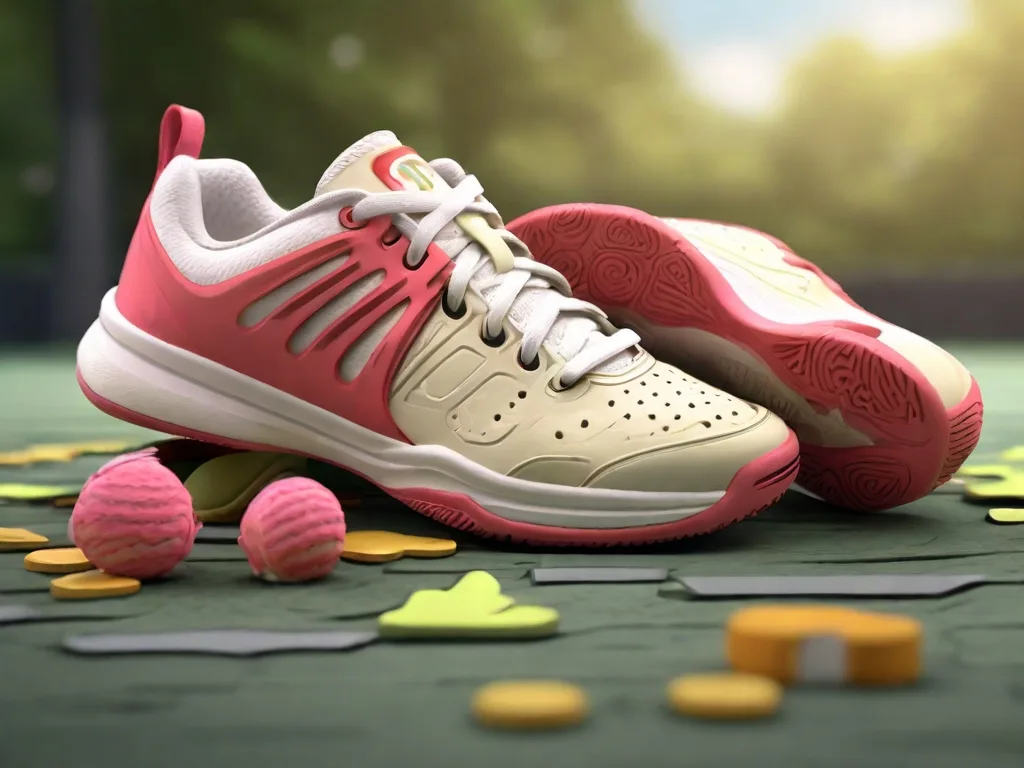
However, it’s essential to strike a balance between achieving superior performance and maintaining tennis shoe performance for a reasonable period. How do you do that, you might wonder? Read on to find out.
It’s also worth noting that the longevity of your shoes isn’t solely dependent on your usage. Proper tennis shoe care for longer use is crucial. From proper cleaning to alternating pairs, there are best practices that can help extend your tennis shoes’ lifespan and ensure you get the best bang for your buck.
So, whether you’re a professional athlete, a daily runner, or an occasional tennis player, this guide will enlighten you on extending your tennis shoes’ life without forgoing their performance or comfort.
“Read About: Tennis Shoes Industry News“
Understanding Tennis Shoes Lifespan and Factors Affecting Wear
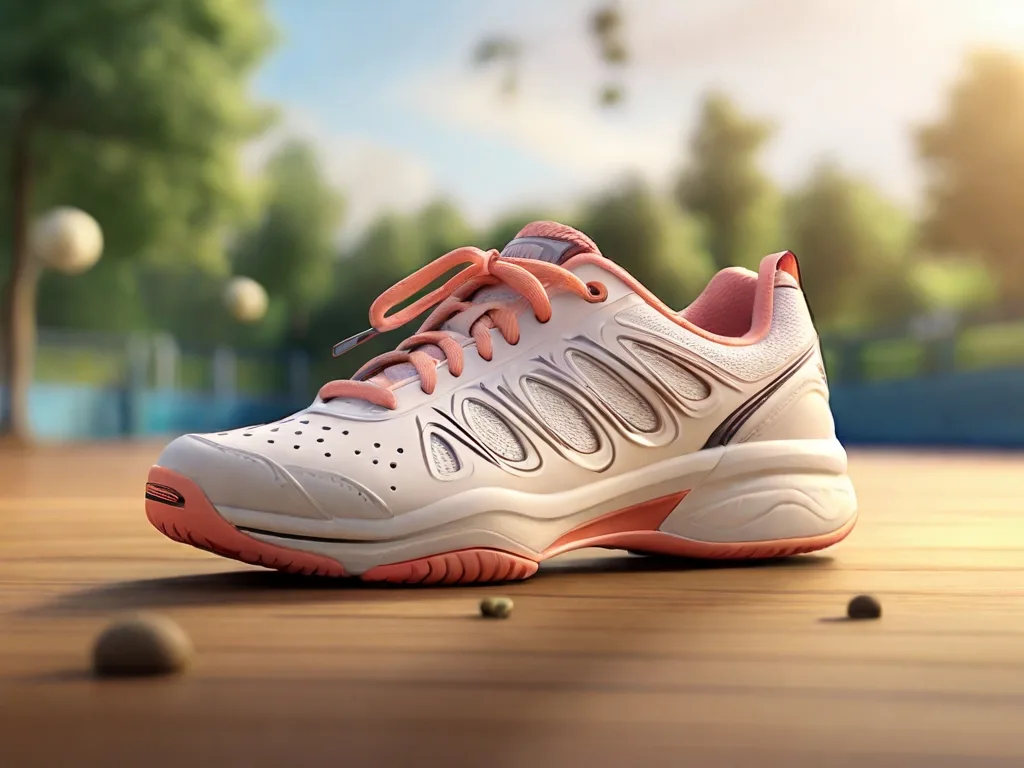
One of the most important metrics for determining tennis shoe lifespan is how many miles they can endure. The conventional wisdom suggests that a robust pair of tennis shoes have a longevity range between 300 to 500 miles. Indeed, the shoe’s cushioning undergoes a gradual decrease over time, influencing how long your favourite pair of athletic footwear might last. Herein lies one of the key factors affecting tennis shoe wear.
However, the advancements in foam technology might impact this consensus. For instance, innovative materials such as Polyether Block Amide (PEBA) might be a game changer to this equation. PEBA’s design aims to boost performance but it may come with an unintended consequence of shortening the shoe’s lifespan due to faster wear and tear.
“Care About: Cross Trainers for Interval Training“
A study conducted in Spain provides valuable insights to this discussion. It brings to light the different impacts of these revolutionary foams on the way our tennis shoes behave after hitting certain mileage. Surprisingly, it also found that external circumstances, such as cold weather, can affect these foam technologies’ durability. Consequently, preserving the life of tennis shoes should be replaced and might necessitate a closer look at your running conditions as well.
Apart from these, other essential considerations when evaluating the wear and lifespan of your tennis shoes include the degree of shock absorption, midsole wear, and the presence of uneven wear patterns. These factors can offer you vital cues on when to consult a tennis shoe replacement guide.
- Shock Absorption: A decrease in a shoe’s shock absorption capabilities is an indication that the shoe has reached a significant portion of its expected lifespan.
- Midsole Wear: A visibly worn midsole can affect foot comfort and running performance, signalling the need for shoe replacement.
- Uneven Wear Patterns: Excessive wear on specific parts of the shoe (usually affected by an individual’s unique biomechanics and running style) can also signify a shortened shoe lifespan.
“Read On: Tennis Shoes K Swiss “
Tennis Shoes Lifespan: Determining When to Replace Your Shoes
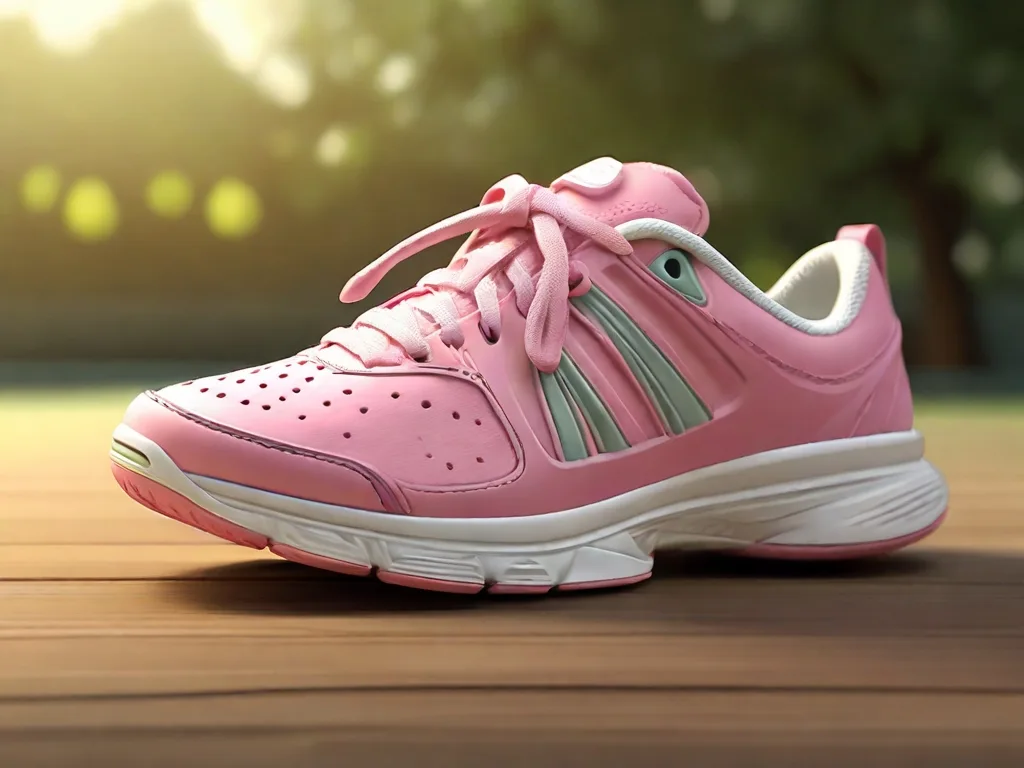
Understanding the lifespan of your tennis shoes will last vital to keeping your feet comfortable and your game at its best. There are several key indicators to lookout for when determining whether it’s time for a replacement or if there are steps you can take to make tennis shoes last longer. Let’s focus on the recommended mileage threshold for tennis shoes, identifying signs of wear and tear, and the effect running surfaces have on your sneakers.
Recommended Mileage Threshold for Tennis Shoes
Typically, the recommended mileage threshold for tennis shoes past ranges between 300 to 500 miles. However, it’s crucial to remember that factors such as your gait, running terrain, temperature, and additional activities contribute significantly to a shoe’s deterioration.
Signs of Wear and Tear long do tennis shoes last
It’s essential to keep track of the physical condition of your tennis shoes. Signs of wear and tear you need to keep an eye out for include a feeling of flatness, unexpected foot soreness, and visibly worn soles. Noticing these signs timely can help you make an informed decision about replace their shoes every and can aid in increasing your tennis shoes’ lifespan.
Effect of Running Surfaces on Tennis Shoes
The surfaces on which you run or play can have a huge impact on the longevity of your tennis shoes. Hard, abrasive surfaces can prematurely compress the midsoles and wear down the tread, thereby shortening the shoe’s lifespan. You can mitigate this impact by avoiding excessive usage on rigid surfaces and alternating between different types of terrain.
To wrap up, keeping tabs on these factors and using this tennis replace your shoes are no longer guide can ensure that your sneakers serve you well for the longest possible time.
“See archived: Soccer Cleats Sole Repair“
The Science Behind Tennis Shoe Durability
Getting the most out of your tennis shoes needs an understanding of their makeup. Primarily, durability in tennis shoes is heavily influenced by the materials used in their production. More precisely, the type of foam chosen for the midsole considerably affects the resilience and overall life of the tennis shoe.
These materials are where modern tennis shoes tread a fine line. Advanced types of foams like PEBA offer an enticing advantage of enhanced energy return that can optimize performance. However, there’s a catch. These foams might trade in longevity for performance as they may not last as long as traditional ones.
On the flip side, traditional tennis shoes with EVA midsoles are known to maintain sustained shock absorption, even after hundreds of miles. This resilience, verified through tests with human volunteers, makes EVA midsoles a go-to for durability.
- Type of Foam: PEBA – Enhanced Energy Return, Lower Durability
- Type of Foam: EVA – Sustained Shock Absorption, Higher Durability
Another aspect worth mentioning is the impact of repeated stress on various parts of the feet during use. Studies have recorded changes in peak pressure on different parts of the foot during a run. The midfoot area, in particular, was shown to be more prone to pressure increases over time. These pressure changes can affect the perception of cushioning and eventually the longevity of the shoe.
| Shoe Type | Foam Type | Shock Absorption | Durability |
|---|---|---|---|
| Modern Tennis Shoes | PEBA | High | Low-Medium |
| Traditional Tennis Shoes | EVA | Medium-High | High |
“Follow On: Cross Trainers for Rehabilitation“
Extending Tennis Shoe Life: Keep Your Shoes Maintenance and Care Tips
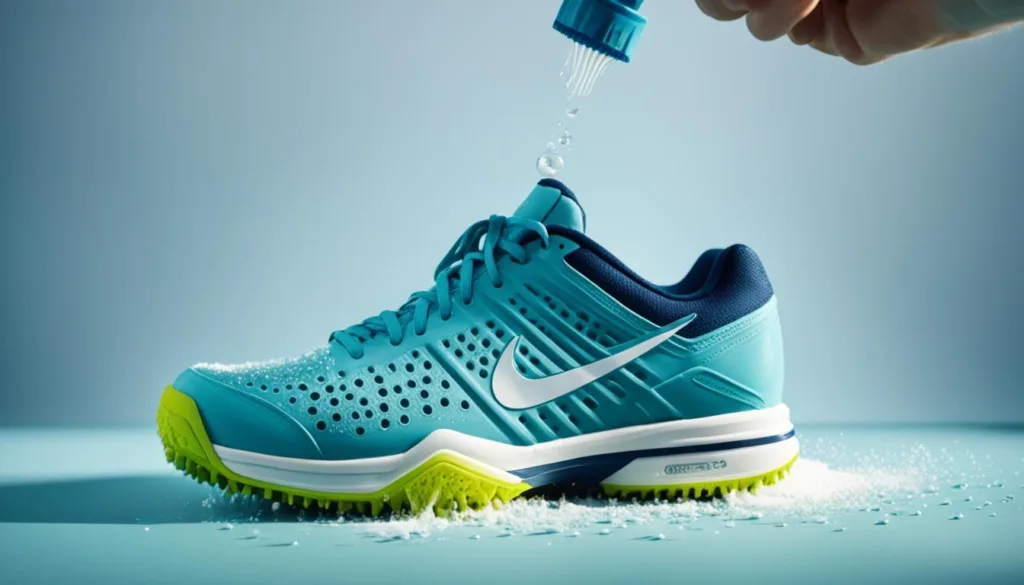
The longevity of your tennis shoes significantly depends on your dedication to their upkeep. Regular care and accruing knowledge about optimal tennis shoe maintenance techniques can be instrumental in enhancing your tennis shoes lifespan and maintaining their performance.
Proper Cleaning Techniques for Tennis Shoes
Regular cleaning using a mild soap can be beneficial to keep your sports shoes in good form. Gentle hand-washing of the upper materials can also aid in preventing premature material degradation, preserving vibrant colours and structural integrity.
The Importance of Regular Insole Replacement
Another crucial aspect of tennis shoe care is keeping a tab on your shoe insole’s wear. Replacing your insoles every 300-400 miles not only provides consistent inner shoe comfort, but also enhances supportive properties, thereby indirectly contributing to your overall game performance.
Advantages of Shoe Rotation and Storage Best Practices
Shoe rotation assists in evenly distributing wear, which can significantly reduce stress and prolong the lifespan of your tennis shoes. Also, proper storage plays an essential role in maintaining tennis shoe performance. Keeping your shoes out of extreme temperatures and moisture conditions helps maintain the material integrity for an extended time.
“Look At: Cross Trainers for Rehabilitation“
Advancements in Tennis Shoe Technology and Materials
get new Tennis shoes have done a long way since their inception, with continuous advancements in shoe technology extending their lifespan and improving player performance. Take for instance, the evolution from traditional materials such as Ethylene Vinyl Acetate (EVA) to more innovative foams like Polyether block amide (PEBA) and Thermoplastic polyurethane (TPU). The tennis shoe industry is indeed undergoing a significant revolution cushioned shoes.
These advanced shoe materials have offered diverse energy returns and created a variety in longevity. For instance, EVA, while being cost effective and ensuring good shock absorption, tends to wear out faster. TPU on the other hand, provides superior durability and flexibility, but is a more expensive option. However, the pivotal introduction of PEBA changed the tennis shoe game with its exceptional energy return and flexibility, although it could pose a shorter lifespan due to its lightweight nature.
Keeping in mind the terms of performance and durability, manufacturers are diligently working towards achieving a perfect balance. Endless research and constant innovation have led to the introduction of carbon-fiber plates that enhance the stability and lifespan of tennis shoes. Such advancements in foam technologies play a crucial role in improving not only the running economy but also the shoe lifespan.
| Shoe Technology | Benefits |
|---|---|
| EVA Foam | Economical, Good Shock Absorption but Faster Wear |
| TPU Foam | Superior Durability, Flexibility but Expensive |
| PEBA Foam | Exceptional Energy Return, Flexibility but Possibly Shorter Lifespan |
| Carbon-Fiber Plates | Enhanced Stability, Extended Shoe Lifespan |
“Learn About: Soccer Cleats Material Care“
Increasing Tennis Shoes’ Lifespan Without Compromising Performance
As you strive to achieve the best out of your tennis shoes, it’s important to strike a balance between increasing their lifespan and maintaining their performance. This careful equilibrium revolves around the understanding of the materials used in the shoe design, as well as properly nurturing them over time.
Impact of Different Foams on Shoe Longevity and Performance
Different types of foams used in tennis shoes are not offering have varying impacts on both durability and performance. For instance, Ethylene-Vinyl Acetate (EVA), Thermoplastic Polyurethane (TPU), and Polyether Block Amide (PEBA) show variations in energy return rates, thereby influencing the shoes’ longevity and functionality.
- EVA: new shoe traditional foam, EVA maintains its properties even in cool conditions, offering consistently good performance over an extended period.
- TPU: TPU is known for its excellent flexibility, toughness, and durability, providing a balanced performance over time.
- PEBA: PEBA foams, on the other hand, are lightweight and offer enhanced energy return, but are less durable against time and wear.
How to Maintain Tennis Shoe Performance Over Time
Maintaining the performance of your tennis shoes over an extended period requires a few strategic choices and practices:
- Regular Rotation: Alternating between multiple pairs of shoes allows your shoe foams to recover their cushioning properties between runs.
- Mindful Wear: Monitoring the intensity and frequency of use can help preserve the life of tennis shoes. Strenuous terrains wear out shoes faster than soft ones. A well-calculated selection of running surfaces can therefore help maximize the wear life of your shoes.
- Careful Cleaning: Regular cleaning, using appropriate soaps and following the manufacturer’s instructions, goes a long way in preserving both the appearance and functionality of your shoes.
“Read About: Running Shoes for Balance Improvement“
Optimizing Tennis Shoe Performance and Comfort
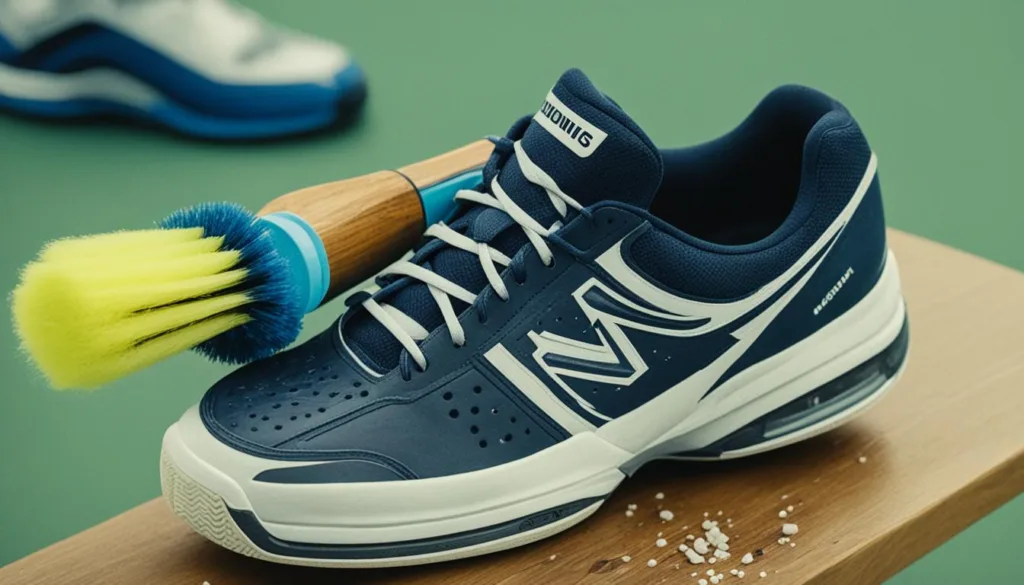
Optimizing the performance of your tennis shoes involves several factors beyond merely tracking their mileage. Understanding the nuances of one’s gait analysis and being conscious of shoe technology can go a long way in helping you make the most of your tennis shoes. Diving deeper into these facets not only can enhance your tennis shoe comfort but can also boost your running efficiency and overall shoe lifespan.
Aligning your tennis shoes with your unique running needs and comfort can bring about significant improvements in your performance. Getting a professional fitting is one way to ensure your shoes meet your specific requirements. This personalized approach allows you to enjoy the highest levels of comfort, granting more mileage from your tennis shoes and thereby maximizing their lifespan.
Running isn’t only about your physical endurance or tennis shoes; acknowledging the need for timely rotation and footwear replacement is essential. Triggers like diminished bounce in your step, foot soreness after routine runs, or even visibly worn-out soles are clear signs your tennis shoes are due to replacing your shoes every.
The journey of maximizing your tennis shoe lifespan doesn’t have to be a strenuous one. With some insight, care, and attention to detail, you can make sure your tennis shoes are always at their optimum—providing superior comfort and facilitating peak performance.
Begin to wear Tennis shoes, just like any other athletic footwear, have a limited lifespan due to the wear and tear they endure. The lifespan of your shoes or running shoes depends on various factors such as usage frequency, the intensity of activity, and the quality of the shoes.
On average, tennis shoes last between 300 to 500 miles of usage, but it’s essential to pay attention to signs of wear and tear. To make your shoes last longer, it’s crucial to take good care of them.
Keep your shoes clean and dry, as excessive moisture can degrade the materials. Additionally, rotate your shoes and avoid wearing the same pair every day, as this allows the cushioning and midsole to recover.
When the soles start to wear out or you notice a significant decrease in support and cushioning, it’s time to replace your shoes. Remember, investing in a new pair of tennis shoes is necessary to prevent injuries and ensure optimal performance on the court.


